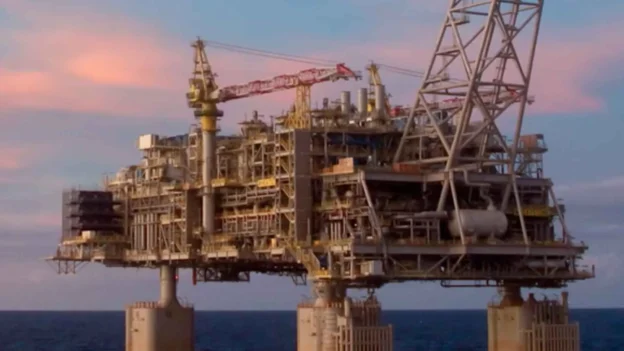At its annual investor day, Chevron Corporation presented a five-year strategic plan, which aims to sustain sustained free cash flow growth, strengthen its asset portfolio, advance energy solutions for artificial intelligence data centers, and increase distributions to shareholders through 2030.
Robust sustained cash flow growth plan
The company expects that, with a benchmark price of $70 per barrel of Brent, its adjusted free cash flow will grow at an annual rate of more than 10%. Under the same price assumption, Chevron projects its earnings per share to grow by more than 10% per year.
These goals are supported by a combination of capital discipline, cost control and a project pipeline that, according to the company, offers lower execution risk than in previous investment cycles.
As part of this approach, the company has reduced the range of its capital expenditure guidance to between $18 billion and $21 billion annually. The company expects to maintain, through 2030, a combined capex-dividend break-even point below $50 per barrel of Brent. In addition, it has set a target of improving the return on capital employed by more than three percentage points by 2030, maintaining the assumption of Brent at $70.
At the operating level, Chevron plans to increase its oil and gas oil and gas production between 2% and 3% annually through 2030. The company points out that it has exploration and production assets in some of the world’s most prolific basins, allowing it to underpin this growth with high-margin projects. The integration of Hess also plays an important role in improving results: the company expects to achieve synergies of US$1.5 billion and achieve structural cost reductions of between US$3 billion and US$4 billion by the end of 2026.
On the other hand, the company emphasizes that its refining and petrochemicals division is strategically positioned and in a phase of expansion. Within this area, the company expects two major chemical projects to come on stream in 2027, contributing to cash flow generation and diversification of its industrial portfolio in the second half of the decade.
The message to the markets also includes an explicit commitment to continued shareholder return. The company recalls that, over the past 25 years, the dividend per share has grown at an average rate of around 7% per year and that it has repurchased shares in most recent years.
Looking ahead to 2030, Chevron expects to execute buybacks of between $10 billion and $20 billion per year, assuming average Brent prices in a range of $60 to $80 per barrel. This program would be supported by sustained cash generation and balance sheet strength.
On the new energy front, the company stresses that it will maintain a pragmatic and profit-oriented approach. The strategy focuses on businesses where it can leverage its existing capabilities, such as renewable fuels, hydrogen, carbon capture, utilization and storage(CCUS) projects and lithium.
Source and photo: Chevron


